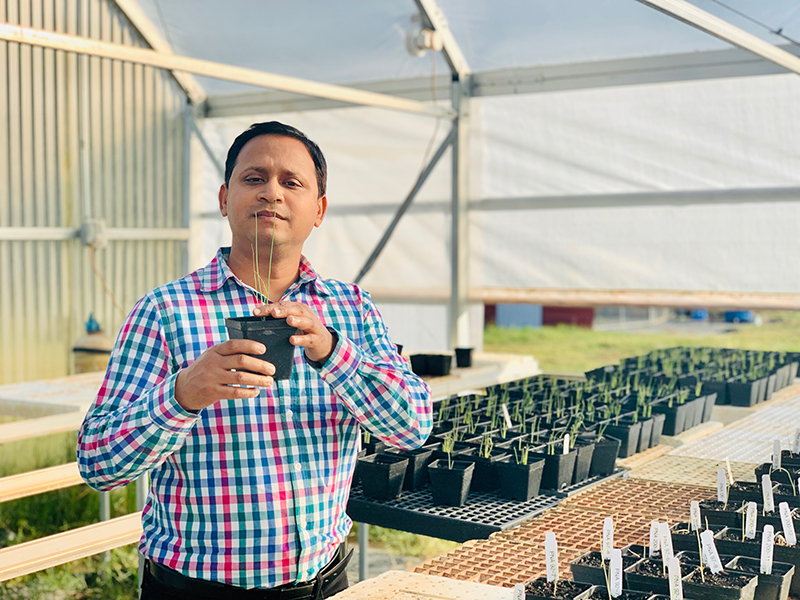Folks don’t like to spit watermelon seeds anymore, so Georgia farmers now grow seedless varieties. The switch has farmers fighting a deadly plant disease that likes seedless melons as much as consumers do, says a University of Georgia expert.
Fusarium wilt is a fungal disease that lives in the soil for years, said David Langston, a plant pathologist with UGA Cooperative Extension. It's now popping up frequently in Georgia watermelon fields.
“It actually lives and survives in the soil and it attacks watermelon roots. As the roots grow out from the watermelon plant, they come into contact with the organism. It will infect the roots and basically kills the plant,” Langston said.
The disease thrives in cool spring weather, he said. Once daytime temperatures hit the 90s, the disease shuts down, but its damage is done by then. Damage so far this year has been localized, but as much as half of some fields has been lost to it.
"We've seen a considerable increase in calls and plant samples that have been diagnosed as fusarium wilt this year so far, twice as many as previous years," Langston said.
The first documented case of the disease in watermelons was in Georgia around the turn of the 20th century. Over the years, the industry developed varieties with resistance to the disease, he said. But all of these varieties have seeds.
Watermelon eaters now demand melons without seeds. Seedless watermelon varieties have been around for many years, but in the past decade, they've become the most widely grown melon type in Georgia and in other watermelon-growing states like Florida and Texas, where farmers also are seeing increased problems with the disease.
Every watermelon-growing county in Georgia has had reports of the disease in seedless melons, he said. Melons are grown in the south-central part of the state.
There are some techniques being looked at to help, he said. But the most important one is finding and testing watermelon varieties that are resistant to the disease, something private plant breeders have had trouble developing.
“Seedless melons have no resistance at all and they have a very difficult time breeding fusarium wilt resistance into them,” Langston said.
Growers could lower their risk for the disease by planting a field in watermelons only every eight years. But growers, due to limited land, usually plant watermelons back to back each year in the same fields. Or they only skip one year. This compounds the problem. The disease can build up in fields that are planted in watermelons each year, killing even more plants the following year.
Georgia is one of the top watermelon-producing states in the country. Georgia farmers plant around 30,000 acres of melons each year, shooting to sell them around the Fourth of July, the mother of all melon-consuming holidays. Right now, there should be plenty of Georgia melons available for the holiday. According to the Georgia Agricultural Statistics Service, most of the crop is in fair to good condition right now.
Many diseases like to attack melons, Langston said. Fusarium wilt is just another one back on farmers’ radars. But it will need to be defeated soon, or many farmers could be planting themselves into an unavoidable corner in the coming years.

.jpg)
.jpg)





